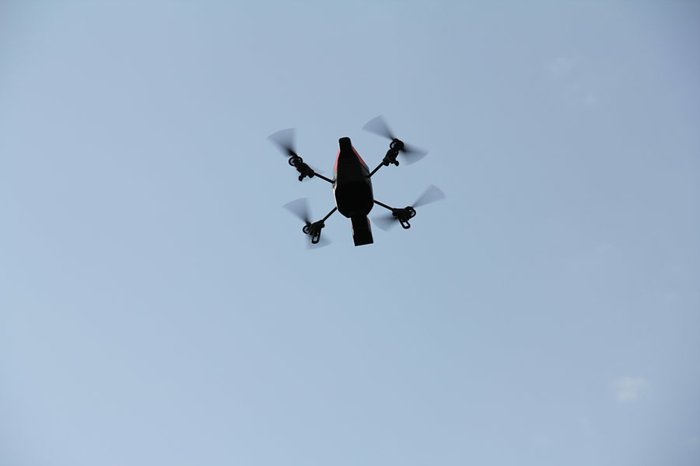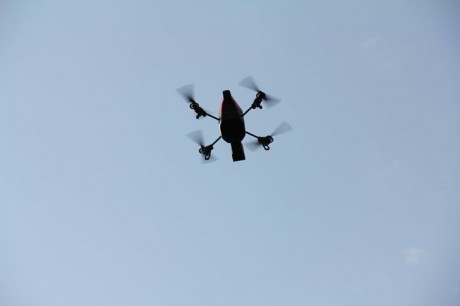On Mar. 4, 2013, at approximately 1:15 p.m. LT, the pilot of Alitalia Flight AZ608, a Boeing 777 registered “EI-ISE”, flying from Rome Fiumicino to New York John F. Kennedy international Airport, spotted a small, unmanned aircraft while on approach to runway 31R at JFK.
The Alitalia B777 was about three miles from the touchdown point at an altitude of approximately 1,500 feet and the drone, described as a four-propeller, black-colored remotely controlled aircraft about 4-feet in diameter, came within 200 feet of it.
Here below you can find the video that embeds the audio of the near miss. Noteworthy, AZ608 used the radio callsign Alitalia 60U “Heavy”.
Whereas the FBI is investigating the incident and looking to identify and locate the aircraft and its operator (flying such dangerous toy next to a major airport is at least insane), it may be interested to analyze what happens when a drone hits a commercial plane configured for landing.
Image credit: WGBH via KPBS.org
Anything hitting a plane configured for landing, hence slow and close to the ground, can theoretically cause a disaster.
Even if the drone was relatively small (at least if compared to pro-ones, i.e. Predator, Reaper and other famous UAVs) the extent of the damage could be quite large.
Let’s see some of them:
- FOD (Foreign Object Damage) in one of the engines: the Boeing 777 is a two-engine liner. Let’s imagine the drone was sucked by one of the two engines. The most obvious result would be loss/reduction of thrust if not engine fire
- Impact with wing and/or flight control surfaces: depending on the extent of the damage, an impact with the wing could cause a chunk of it falling apart, or debris damaging some of the control surfaces, with consequent reduction of lift generated by the wing, instability and/or inability to move the control surface (imagine drone parts being stuck between ailerons, flaps, etc.)
- Front impact/cockpit incursion: debris could damage or destroy the windshield, entering the cockpit injuring or killing the pilots (once again this depends on the size of the drone and the airspeed at the time of the midair collision)
- Impact with another part of the airframe: if the drone hit other, less critical parts of the plane, it could damage sensors, antennas and other equipment that feed the flight data computer, resulting in a lack of information to the aircrew.
- Distraction: if you see a drone coming close to your plane you’ll probably switch your attention towards it with a consequent loss of situational awareness. This can be dangerous, especially if it happens at very low altitude, at night, in poor weather.
Summing up: a lot of bad things can happen, but it all depends on the drone’s size and point of impact. Hence, better you fly your RC-model far away from airports if you don’t want to cause or be part of an aviation incident….or disaster.



















